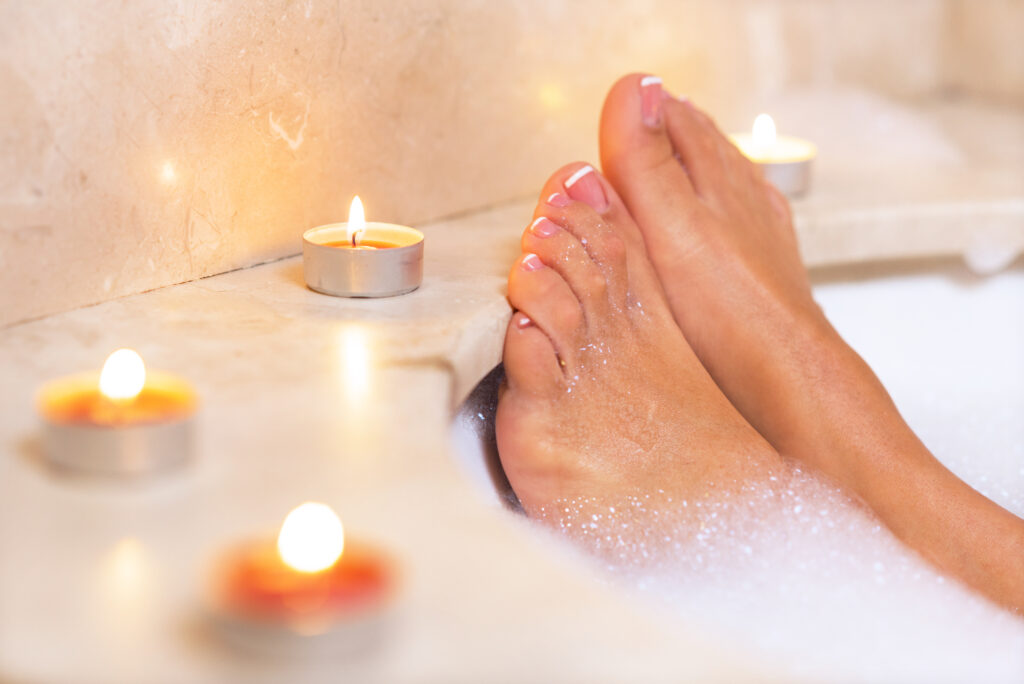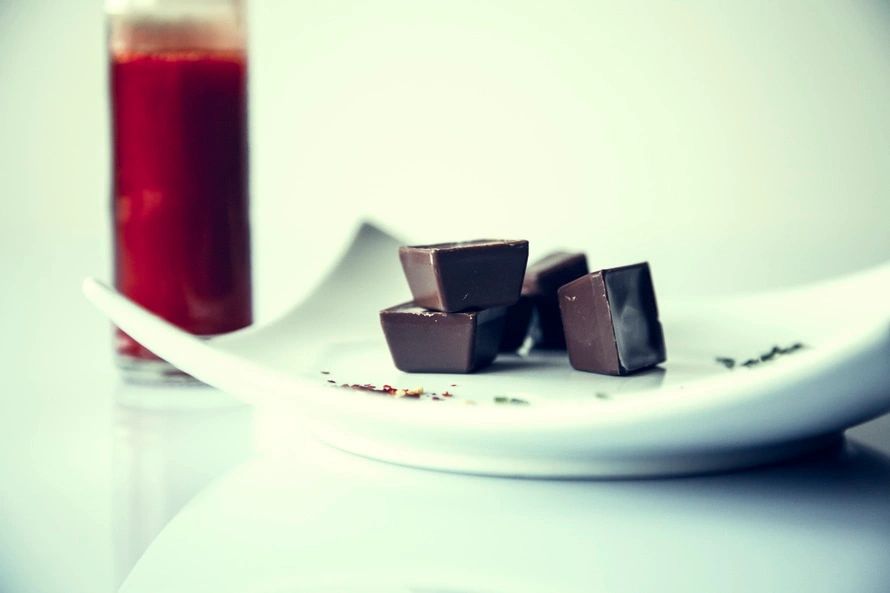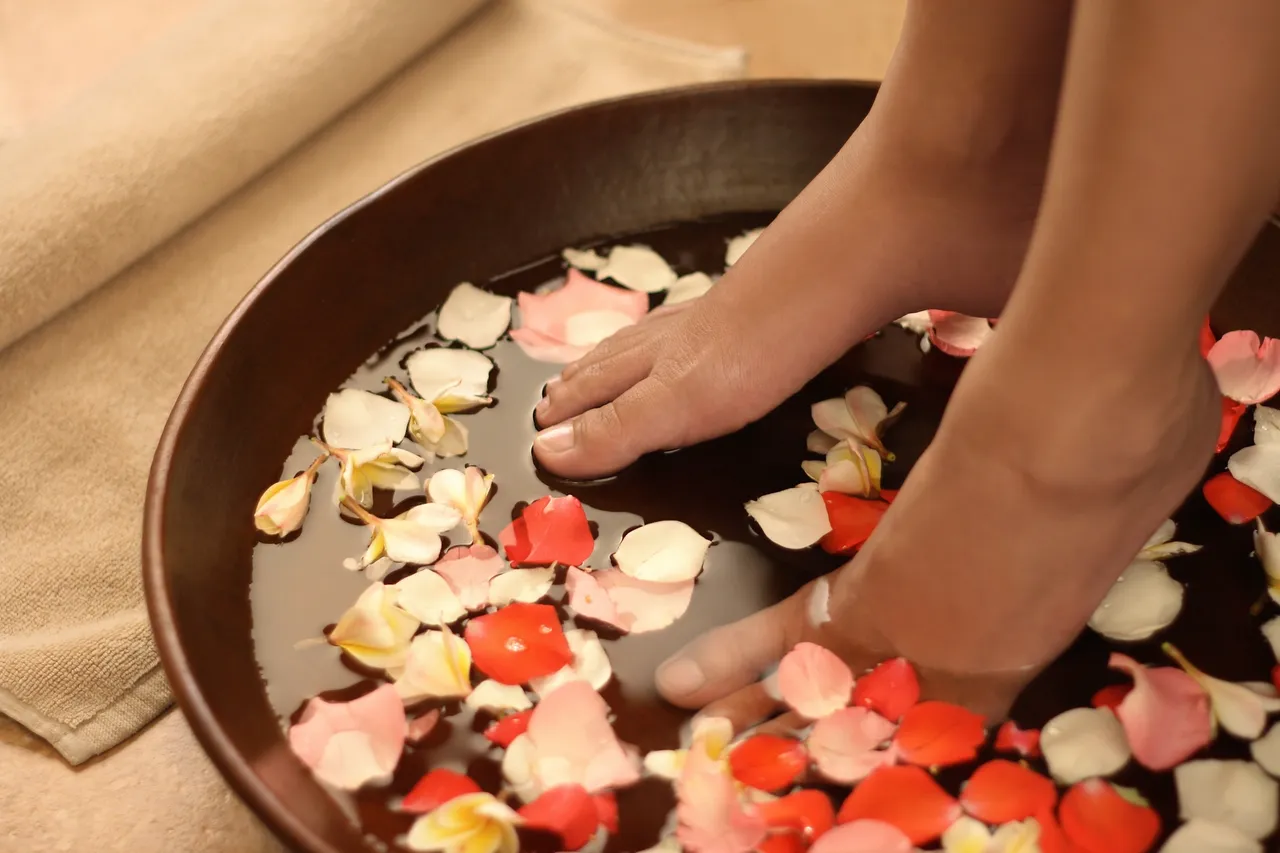
When we experience emotional discomfort, we also experience it in our bodies, and thus we can use physical means to effectively create comfort. These physical means can be very simple but powerful by utilizing the five senses. The more senses we use in combination, the more effective the comfort routine will be. The more often we use this same combination in the same way, the more effective the routine will be as well. This phenomenon is similar to “muscle memory” which happens as a result of repetitive movement over time. I’ve worked with many anxious clients who use substances to self-soothe, and what I’ve learned is that the ritual of the use of the substance is almost just as important as the effect of the substance alone. By “ritual” I mean the circumstances and surroundings that accompany the use of the substance such as being in a certain room, having music playing, sitting in a favorite chair, and other particulars that the person has used many times. Eventually, just being in that room with that music in that chair will trigger a person to feel more relaxed simply because he or she is anticipating what often comes next: the use of the substance.
When we do anything repeatedly, we develop what’s called “conditioning” in which our brains start to associate one thing with another. For example, notice what happens when you read the following: “Peanut butter and…”

What did your brain think of next? For most of us it was “jelly” for the simple reason that we have heard that phrase many times. Our brains have paired those two things together and in that order. If I had said instead, “Jelly and…”, you probably wouldn’t have immediately thought of “peanut butter.” You can pair any two (or more) things and over time, and they will become linked together in your brain. We can use this phenomenon to our advantage when it comes to finding ways to unwind, self-soothe, and find comfort when we most need it. Repetition is the key. There’s a phrase in the field of neurobiology that says: “Neurons that fire together wire together.” This means that the more times you pair two things, the stronger that association becomes.

So back to the five senses. Let’s start with Smell (Olfactory sense). Can you think of a certain scent that has positive association or memory for you? For example, one of my clients has very fond memories of baking in the kitchen with her grandmother, and the smell of cinnamon immediately takes her back to that time and place. Smell in particular is strongly connected to memory more than any of the other senses. The reason for this is that the olfactory bulb is close to two areas of the brain (the amygdala and hippocampus) that handle memory and emotion. When you already have a positive association with a scent, it is so useful when creating a comfort routine. If you aren’t sure what scent to use, try going into a candle store and trying out different scents. You’ll know when you find one that brings up happy, calming feelings. It’s not necessary to have one special memory or person associated with the scent, but if there is one, it makes it more potent. Having a small candle or bottle of essential oil in your car or your purse is one way to have a portable relaxation tool when you aren’t at home to do your full comfort routine. I’ve found it very helpful in therapy sessions to have lavender essential oil which most people find soothing to smell as they take slow, deep breaths.

Next is the Auditory sense. Music (and sound in general) is another way to access feelings of calm and positive emotion. I’m sure we’ve all had the experience of hearing a song on the radio that immediately reminds you of a person, time in your life, or a specific memory. Music can evoke all kinds of emotions, so it can be helpful to make a playlist of songs that you already associate with positive feelings. Whether you play an instrument or just enjoy listening to music, it is a great addition to any comfort routine. You can also use nature sounds like ocean waves if you have happy memories of being at the beach, for example. Other people find rain or whale sounds soothing. Experiment and find what works for you!

Vision is the sense we use the most, so a large portion of the brain is designed to help us see. Imagery is powerful and bypasses words which makes sense because we could all see before we could talk. You might try making a collage of soothing images and putting it up on your wall. It can even be a fun, creative project to do with a friend. These images can be photographs or people or places you’ve been, or just images of places in nature or objects that represent something soothing for you, like a candle or flower. You can take a picture of the collage and have it as your background on your phone or computer. It’s important to pick images that only have positive associations for you, so choose wisely! I’ve had clients create self-soothing collages as part of their therapy and we use it routinely at the end of the session to help “re-ground” before leaving my office.

The Tactile sense is the sense of touch: physical contact with others as well as anything our bodies make contact with. Physical touch is necessary for survival. Think of how you would go about soothing a baby: swaddling in a blanket creates a sense of security, and being warm and held and rocked are all effective methods of soothing a baby in distress. The same rules apply for adults. We are creatures of comfort and the simple things really count: warm fuzzy pajamas or flannel sheets, a hug from a loved one, curling up with a sleeping pet, a hot shower or bath, rocking in a rocking chair wrapped in a blanket, or giving yourself a foot massage are all in this category. Take a moment to imagine each of these experiences and see what would feel best for you.
Finally, the sense of Taste can be a little tricky since I don’t want to reenforce eating as a self-soothing behavior (especially if you have a history of disordered eating behaviors), but when used as part of a comfort routine in a mindful way, I think it’s okay. A few squares of very dark chocolate (at least 70% cacao) actually have multiple health benefits (https://nationaldaycalendar.com/10-main-health-benefits-of-dark-chocolate/) and they also trigger the brain to release four naturally occurring chemicals: endorphins, serotonin, dopamine, and oxytocin. All of these chemicals produce pleasant effects and won’t cause a blood sugar crash or a hangover. I encourage you to eat a small amount of dark chocolate on a regular basis since it is such a superfood and good for you!

Once you have done some experimenting with each of the 5 senses, you can customize a comfort routine that works for you. It doesn’t have to be exactly the same each time, but remember, neurons that fire together wire together, so the more you condition yourself by using the same routine, the more effectively it works. The more senses we use in combination, the more effective the comfort routine will be. Having a comfort routine can be very useful after a stressful day at work, or any time you feel scattered or upset. In fact, I’m finding that clients struggling with addictions of all kinds are using their comfort routine when they are having cravings to engage in the behavior that they are trying to stop. When someone is used to a quick fix when they feel uncomfortable or overwhelmed, it can be difficult at first to resist a craving and take the time to do something else instead (like go for a walk for example). It takes repetition and willingness to tolerate being uncomfortable while these new behaviors are being established. If you are struggling with stopping a self-harming behavior or addiction, I encourage you to give this a try. You are worth the effort! Feel free to reach out to schedule a free 30 minute consultation if you are struggling to stop a self-harming behavior and we can discuss your situation.
